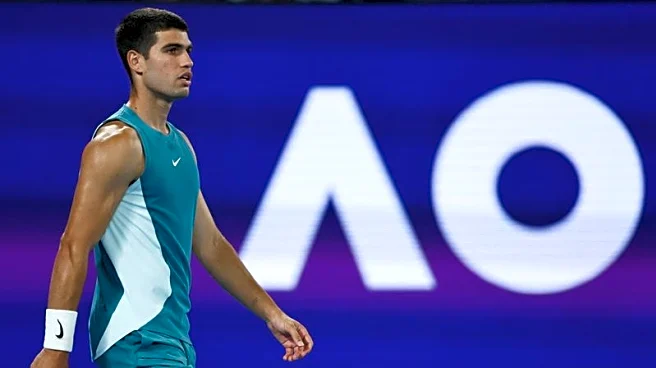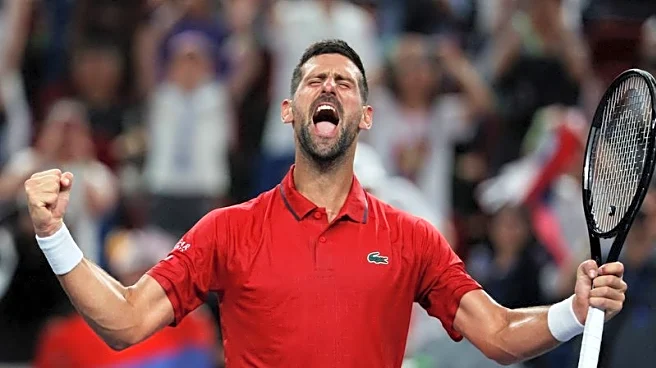What's Happening?
Carlos Alcaraz is set to participate in a novel event called the 'One Point Slam' at the upcoming Australian Open. This competition will feature 22 professional players, including Alcaraz, and 10 amateur players. The unique format involves matches consisting of a single point, with the server determined by a pre-match game of 'rock, paper, scissors'. The event aims to attract new audiences to tennis, following similar initiatives like the expanded mixed doubles competition at the U.S. Open. The winner of the 'One Point Slam' will receive a prize of AUS$1 million, equivalent to $700,000, which is slightly less than what semifinalists in the main draw receive.
Why It's Important?
The 'One Point Slam' represents an innovative approach to engaging tennis fans and broadening the sport's appeal. By including amateur players and simplifying the match format, the event could attract viewers who might not typically follow traditional tennis tournaments. This initiative aligns with broader efforts in the sports industry to increase accessibility and participation. For professional players like Carlos Alcaraz, participating in such events can enhance their visibility and connect them with a wider audience. The substantial prize money also adds a competitive edge, potentially drawing significant attention to the Australian Open.
What's Next?
As the event approaches, more professional players are expected to be announced, increasing the anticipation and excitement surrounding the 'One Point Slam'. Entries for amateur players will open soon at clubs across Australia, providing opportunities for local talent to compete on a prestigious platform. The event will take place during the opening weekend of the Australian Open, setting the stage for a unique and engaging start to the tennis season. Stakeholders in the tennis community will likely monitor the event's success to evaluate its impact on audience engagement and participation.
Beyond the Headlines
The 'One Point Slam' could influence future tennis tournaments by demonstrating the viability of unconventional formats. This approach may encourage other sports to explore similar initiatives, fostering innovation in event design and fan engagement. Additionally, the inclusion of amateurs alongside professionals highlights the potential for sports to bridge gaps between different levels of play, promoting inclusivity and diversity within the athletic community.











